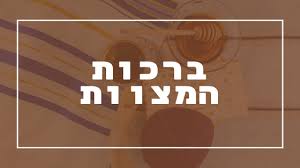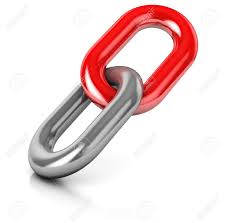Introduction to Shema and its Berachot (11) – The relationship between the blessings (3) – Ramban & Rav Hai (Rashba)
 We have seen that the Yerushalmi and the Bavli seemed to use the phrase ברכות מעכבות (that the omission of the blessings does or does not impact the Shema or the other blessings) to refer to different questions. The Yerushlmi appeared to refer only to the question of the berachot and Shema while the Bavli seemed to deal only with the question of the berachot in relation to each other. We noted a difficult question of Tosafot who compared those very two texts on the assumption that they are talking about the same topic. What emerged was that when one says ברכות אינן מעכבות את שמע (the omission of the blessings does not stand in the way of the fulfillment of the Shema) one could mean that these two berachot are not only distinct from the Shema but also operate apart from one another.
We have seen that the Yerushalmi and the Bavli seemed to use the phrase ברכות מעכבות (that the omission of the blessings does or does not impact the Shema or the other blessings) to refer to different questions. The Yerushlmi appeared to refer only to the question of the berachot and Shema while the Bavli seemed to deal only with the question of the berachot in relation to each other. We noted a difficult question of Tosafot who compared those very two texts on the assumption that they are talking about the same topic. What emerged was that when one says ברכות אינן מעכבות את שמע (the omission of the blessings does not stand in the way of the fulfillment of the Shema) one could mean that these two berachot are not only distinct from the Shema but also operate apart from one another.
The claim that recitation of the berachot is not linked directly to the Shema basically indicates that they are not ברכות המצוה (mitzvah blessings) but standard ברכות שבח (blessings of praise) that happen to be situated before the Shema. If a person skipped one of the ברכות השחר (the morning blessings), there would be no reason to think that any of the other berachot are impacted1. What I would like to show is how this debate appears after the Tosafot, in the 13th century Rishonim in Sefarad — the Ramban and the Rashba — and how that appearance deepens our understanding of this entire unit of the Siddur.
Ramban
In his first surviving comment on Masechet Berachot, the Ramban is bothered by the custom of reciting “אל מלך נאמן” between the beracha of Ahavat Olam (Ahava Rabba) and the first line of the Shema. He explains as follows:
חידושי הרמב“ן מסכת ברכות דף יא עמוד ב, מאימתי
כבר היה מנהג בעיירות לומר בין אהבת עולם לקריאת שמע אל מלך נאמן, ובילדותי נתקשה עלי. לפי שהדבר ידוע שאהבת עולם ברכת המצוה היא לקריאת שמע. שכל המצות כולן טעונות הן ברכה עובר לעשייתן. וכן בהלל וכן במגלה וכן בקריאת התורה…וזהו שאמרנו [ברכות יא:] בהשכים אחר שקרא א”צ לברך שכבר נפטר באהבה רבה. דברכת שנון תורה היא…וה”נ מוכח בשמעתא דאמר להם הממונה [ברכות יא:-יב.] ברכו ברכה אחת כו’.
Chiddushei ha-Ramban, Berachot 11b
The practice in the villages was to recite El Melech Ne’eman between Ahavat Olam and the reading of the Shema. And in my youth this bothered me because the matter is known that Ahavat Olam is a Mitzvah beracha on the Shema. For all Mitzvot require a beracha before they are done. And so too is the case with Megilla and Torah Reading…And this is what we said (Berachot 11b). If you rose early and recited [Shema and its berachot], you no longer need to recite Birkot ha-Torah because you have fulfilled your obligation [of birkot ha-Torah] with Ahava Rabba. Because it is considered a beracha on [intense] Torah learning (שינון). of And so too it is clear from the sugya in Berachot 11b/12a…
The Ramban’s position is clear. The beracha immediately preceding the Shema is a ברכת המצוה, a beracha on a Mitzvah. He seems to think that this is widely known and obvious and brings a few proofs to his approach, one from the fact that Ahava Rabba functions as Birkot ha-Torah and one from the deceptively complex sugya on 11b/12a that we saw last time2. Categorizing this beracha as a ברת המצוה (a blessing on a mitzvah) could be an extension of the idea that ברכות מעכבות (proper fulfillment of the berachot stands in the way of each other).
This categorization helps us to understand the inference that R. Zerika made on the words of Reish Lakish. Since Ahavat Olam is a birkat ha-mitzvah, it would make no sense to recite that beracha after having already said the Shema itself. Therefore, the one beracha that the kohanim must have said was Ahavat Olam, allowing them to recite Yotzer Or later in the day.
The Ramban’s understanding builds on the approach of Tosafot (11a, s.v. Im kivein libo), who concluded that even though the proper order of the berachot does not stand in the way of their fulfillment, one must recite both blessings every day (סדר ברכות אין מעכבות הא ברכות מעכבות). According to both Tosafot and Ramban, the berachot are, at least in some capacity, inextricably linked to the Shema. They do not express that connection identically, but for both of them the beracha preceding the Shema and the Shema itself are linked. It is possible, though not necessarily the case, that the Ramban’s assumption that Ahava Rabba is a birkat ha-Mitzvah emerges from Tosafot’s link between the two.
Rav Hai Gaon (Rashba) –
The Rashba clearly disagreed with his teacher, the Ramban. However, before we analyze his own position, let us consider the Geonic approach that he cites in his commentary on Berachot 11b. He begins by quoting Rav Hai Gaon’s understanding of the conclusion of the sugya:
חידושי הרשב”א מסכת ברכות דף יא עמוד ב, ושמע מינה ברכות אין מעכבות זו את זו…
ופסק רבינו האי גאון ז”ל כך בפירושיו דסדרן אינו מעכב אבל ודאי צריך הוא לקרות את שתיהן.
Chuddushei ha-Rashba, Berachot 11b, s.v. u’shema mina berachot ein meakvot…
And Rabbeinu Hai Gaon, in his commentary, paskened that their order does not stand in the way, but you must certainly recite both berachot.
This brief comment of Rav Hai is directly in line with the conclusion that Tosafot reached. Perhaps Rav Hai is the source for Tosafot? The Rashba continues and asks basically the same question that Tosafot in Berachot had asked by comparing the conclusion of the Yerushalmi, אין הברכות מעכבות (the berachot do not stand in the way of the Shema) with the Bavli. Rav Hai then offers the same distinction, “הכא בציבור”, that in public both berachot must be recited, but in private the order is not significant. Again, he reaches the same answer as Tosafot.
 We have thus seen three approaches: Rav Hai, the Ba’alei ha-Tosafot, and the Ramban. This cluster works together in the sense they agree that there is a direct connection between the berachot and the Shema. The Ramban distinguishes between the two berachot – Yotzer Or is a birkat ha-shevach and Ahava Rabba is a birkat ha-mitzvah. Rav Hai and the Ba’alei ha-Tosafot assume that both berachot must be recited, even if one is said after the Shema. The permission to recite the beracha afterwards clearly reflects that they don’t think that this beracha is a birkat ha-mitzvah. Next time, we will look at the position of the Rashba himself and how it might shape our approach to this section of the Siddur.
We have thus seen three approaches: Rav Hai, the Ba’alei ha-Tosafot, and the Ramban. This cluster works together in the sense they agree that there is a direct connection between the berachot and the Shema. The Ramban distinguishes between the two berachot – Yotzer Or is a birkat ha-shevach and Ahava Rabba is a birkat ha-mitzvah. Rav Hai and the Ba’alei ha-Tosafot assume that both berachot must be recited, even if one is said after the Shema. The permission to recite the beracha afterwards clearly reflects that they don’t think that this beracha is a birkat ha-mitzvah. Next time, we will look at the position of the Rashba himself and how it might shape our approach to this section of the Siddur.